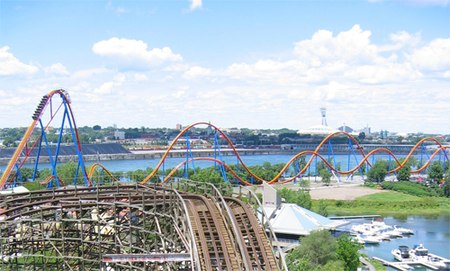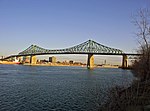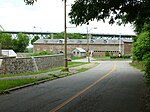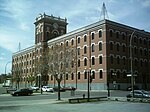Goliath (La Ronde)

Goliath is a steel roller coaster at La Ronde amusement park in Montreal, Quebec, Canada. Designed by Bolliger & Mabillard, it reaches a maximum height of 174.8 feet (53.3 m), a speed of 68.4 miles per hour (110.1 km/h) and a track length of 4,038.8 feet (1,231.0 m). Construction commenced in September 2005, and the roller coaster opened to the public on May 13, 2006. Goliath was the tallest and fastest roller coaster in Canada until it was surpassed by Behemoth (another Bolliger & Mabillard roller coaster), at Canada's Wonderland in 2008. Six Flags announced in 2016 that Goliath would be hooked up with Virtual Reality for a New Revolution experience for the 2016 season.
Excerpt from the Wikipedia article Goliath (La Ronde) (License: CC BY-SA 3.0, Authors, Images).Goliath (La Ronde)
Avenue du Port, Montreal Ville-Marie
Geographical coordinates (GPS) Address Nearby Places Show on map
Geographical coordinates (GPS)
| Latitude | Longitude |
|---|---|
| N 45.527812 ° | E -73.536299 ° |
Address
Avenue du Port
H3C 6A3 Montreal, Ville-Marie
Quebec, Canada
Open on Google Maps









